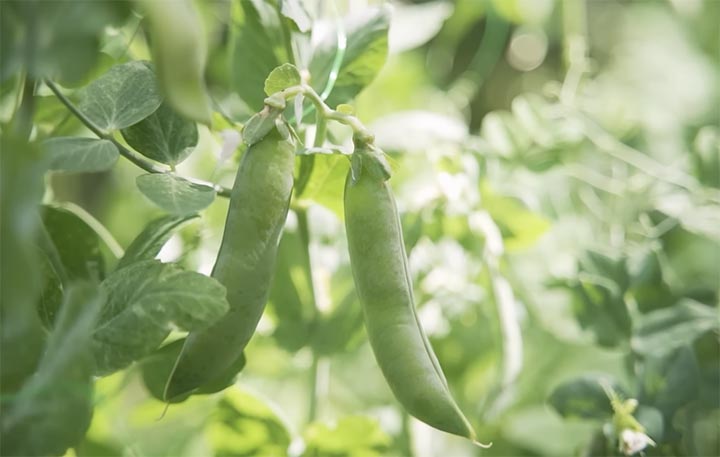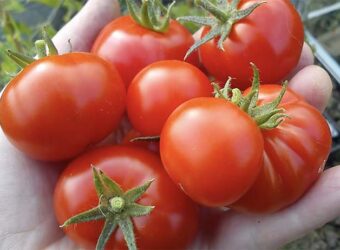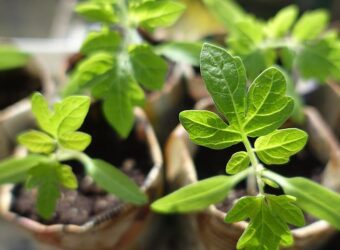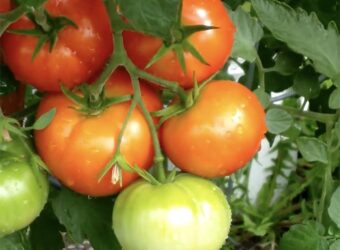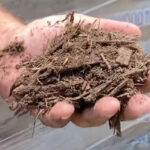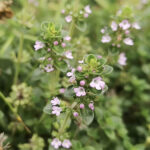While tomatoes are the long-awaited summer crop, peas are the sweetness of spring. Garden-grown snap peas, snow peas, and shelling peas all offer a flavor that is incomparable to that of their grocery-store cousins.
Despite their delicious flavor, I find that gardeners often stray away from growing peas due to their long time to maturity and tall vines.
However, strategically selecting the crops you grow alongside pea plants can help you make the most of your garden space and capitalize on what the pea plants have to offer. This is known as companion planting.
We’ll introduce you to the benefits of companion planting with peas. Then we’ll introduce you to some of the best and worst companion plants for peas.
The Benefits of Companion Planting with Peas
Even if you love peas, they’re probably not the only plant you plan to grow in your garden. Perhaps you’ll try your hand at growing bunches of sweet carrots, bundles of parsley, cut flowers, or a tomato plant or two.
Paying attention to how you arrange these crops can have a big impact on the overall success of your garden. That’s because some plants play well together while others antagonize each other.
Don’t believe us? Consider the following benefits of companion planting with peas.
Decrease Nitrogen Fertilizer Applications
Peas are a type of legume. Other legumes include various kinds of beans and lentils.
While you may know legumes for their creamy texture and high protein content, you may not know about legume plants’ superpower: nitrogen fixation.
Legumes such as peas develop roots that contain specialized nodules that host bacteria known as rhizobia. These bacteria convert atmospheric nitrogen into a plant-available form known as ammonium (NH₄).
The pea plants use this ammonium to help them grow. In return, they provide the rhizobia with carbohydrates.
While the pea plants use some of the ammonium the rhizobia produces, there is often an excess amount. This excess enters the soil where other plants can take it up.
This means that planting peas in your garden can help supply other plants with nitrogen. Consequently, you will be able to decrease the amount of nitrogen fertilizer you apply.
Encourage Beneficial Insects
Like most vegetable plants, peas are susceptible to damage from a wide variety of insect pests.
Sap-sucking pests such as aphids, thrips, spider mites, and whiteflies use their mouthparts to pierce pea tissue and suck out plant sap. While a few of these pests generally won’t cause much harm, they can multiply quite rapidly.
Let’s look at aphids.
Each adult aphid can produce about 80 nymphs each week, and these nymphs can reach sexual maturity in 4–10 days. That means one aphid can turn into thousands in a couple of weeks.
What’s that mean? You need to control these little pests as soon as they appear!
The trouble is that it’s quite difficult to spot a handful of aphids or thrips—remember these pests are small! That means that when these pests are easily visible, they have already multiplied into an amount that can do significant damage.
Fortunately, insects like green lacewings, ladybugs, hoverflies, and parasitic wasps are much better at finding these pests. And when they find the pests, they destroy them!
The trouble is that not all life stages of these beneficial insects feed on pests. While the larvae stages often eat aphids, thrips, etc., the adults typically feed on flower pollen and/or nectar.
That means that adding flowering plants to your garden can help attract these beneficial insects. I like to plant a wide array of flowering plants, so these good bugs always have a source of nectar and pollen.
When you plant flowering plants with peas, you increase the chances that beneficial insects will take root in your garden. This means that you may not need to control pests via handpicking or insecticides.
Utilize Natural Shade
Since peas are climbing plants, most people grow them on a trellis or other type of support. No matter if you’re growing snap peas, shelling peas, or snow peas, healthy plants can grow over five feet tall.
While some people find this pea plant wall a bit of a hassle to fit into the garden, you can use it to your advantage! Planting heat-sensitive crops along the eastern side of the pea plants will help protect them from the afternoon sun.
Best Companion Plants for Peas
In general, peas will benefit plants that require lots of nitrogen. That’s because peas help fix atmospheric nitrogen and convert it into a form other plants can take up.
When it comes to selecting plants that benefit peas, look for flowering plants that help attract beneficial insects. These insects will help keep pea pests at bay.
1. Beets
Although beets are grown for their roots, they require a heavy dose of nitrogen to thrive.
Applying nitrogen fertilizer is one way to provide beets with the nutrients they need to thrive. But it’s not the only way.
Pea plants’ roots contain nodules that host rhizobia bacteria. These bacteria convert atmospheric nitrogen into a plant-available form. While peas take up some of this nitrogen, the excess is available to nearby beets.
Since peas are often grown on a trellis, they also fit in well with beets. I like to grow a row of peas on a trellis and then two rows of beets on either side of the peas.
Another reason why peas and beets work well together is that they both enjoy cool weather. That means you can plant both of them in the spring and fall without worrying about the plants becoming heat-stressed or damaged by cold.
One thing to keep in mind is airflow. Since both beets and peas are susceptible to fungal diseases, you should avoid planting these crops too close together.
I like to plant a row of beets about one foot away from my row of peas. I find this allows for airflow between plants and decreases the chance of plants developing powdery mildew, Cercospora leaf spot, and other diseases.
2. Turnips
Turnips are another root crop that can pair well with peas. Peas and turnips prefer cool weather, making them a natural pairing.
Like with radishes, turnips’ tall and narrow form fits in well beside a row of trellised peas. I like to plant a row of turnips about 8–12 inches away from the peas.
Since turnips are brassicas, they need a moderate amount of nitrogen to thrive. They may display yellow leaves and stunted growth if they don’t receive enough nitrogen.
With that said, too much nitrogen can lead to lots of greens but small roots. And while turnip greens are delicious, many individuals are after the sweet roots.
So, how do peas come into play? As mentioned above, pea plants can help increase the amount of plant-available nitrogen in the soil. So if you plant peas with your turnips, you won’t have to add as much nitrogen fertilizer.
All types of turnips can work well with peas. Classic purple top turnips are one option, and sweet hakurei turnips are another.
3. Lettuce
Once again, peas and lettuce are cool-weather crops. Since you’ll be growing them at the same time of year, you might as well utilize the benefits they can offer each other.
First off, peas provide nitrogen to the lettuce plants. This helps develop lush, salad-ready leaves.
If you grow your peas on a trellis, the pea plants can also provide a bit of shade for lettuce plants. This can be especially helpful to the lettuce as the days become warmer in the late spring.
This little bit of shade can help cool the lettuce plants and help prevent them from bolting. Planting your lettuces on the east side of your pea plants will help protect the greens from the hot afternoon sun.
4. Kale
Kale is another brassica that requires a large dose of nitrogen to thrive. Without enough nitrogen, kale plants may become stunted, yellow, or diseased.
Pea plants can help convert atmospheric nitrogen into a plant available form that kale plants can take up. However, you may still need to apply nitrogen fertilizer to help your kale plants thrive.
Another reason kale and peas work well together is that they both thrive in cool weather.
When it comes to spacing peas and kale, I find it helpful to consider the type of kale you’ll be growing. While the variety doesn’t matter, the mature size does.
If you’re growing large kale plants for mature leaves, space the kale plants 15–18 inches away from the base of the pea plants. If you’re growing a row of baby kale, you can plant the greens 6–8 inches away from the base of the peas.
5. Spinach
One of my favorite spring dishes is a spinach salad topped with peas. And fortunately, these two crops are great companion plants!
First off, both of these crops grow best in cool weather. That means you can plant them together in the spring and again in the fall.
Next, the peas’ ability to fix nitrogen helps the spinach plants grow rich, green leaves. Spinach plants require lots of nitrogen to thrive, so planting them with peas can help decrease the amount of nitrogen fertilizer you will need to add to the soil.
However, you still may need to add nitrogen to the spinach if you are harvesting from it for multiple months. Side-dressing the plants with granular fertilizer or applying a liquid product like fish emulsion can help give spinach plants the boost they need.
6. Sweet Alyssum
While a lot of the crops that are good companion plants for peas take advantage of the peas’ ability to fix nitrogen, sweet alyssum provides benefits to the peas.
Peas plants are susceptible to damage from small sap-sucking insects like aphids, thrips, and spider mites. A few of these pests won’t create much damage to peas, but the trouble is that these pests can quickly multiply and get out of control.
Therefore, eliminating these small pests as soon as they arrive in your garden is key to keeping your plants healthy.
Spraying the pests off by hand or applying an insecticide is one way to eradicate them. However, this can be a lot of work!
Another way to keep these pests in check is by relying on natural enemies! Insects like ladybugs, green lacewings, hoverflies, and parasitic wasps seek out and feed on these little pests before they become out of control.
However, it’s important to note that only the larval form of many insects feeds on pests—the adults often feed on flower nectar and/or pollen. That means that providing food for the adults makes it more likely that these good bugs will stick around.
That’s where sweet alyssum comes in. This flowering plant produces hundreds of small flowers that appeal to beneficial insects of all kinds.
Additionally, sweet alyssum can tolerate cool temperatures and light frosts, which makes them a fit for cool-weather peas.
Although sweet alyssum is an annual, it often produces and drops seed that germinates the following year. That means you should be careful where you plant sweet alyssum if you don’t want to make this plant a permanent garden fixture.
7. Calendula
Calendula is another cold-tolerant flowering plant that can help attract beneficial insects. That means planting calendula with your pea plants can help keep damaging pests in check.
Some beneficial insects that calendula plants may attract include green lacewings, parasitic wasps, hoverflies, tachinid flies, bees, and butterflies.
Since calendula plants generally grow about a foot tall and a foot wide, I like to space them about a foot away from the base of my pea plants. This spacing allows for some airflow without creating too much wasted space.
Remove dead flower heads if you want your calendula plants to produce a continuous supply of blooms. Alternatively, you can harvest fresh flowers for edible or medicinal uses.
8. Arugula
Arugula is one more brassica that can work well alongside peas. As a heavy feeder, arugula benefits from the pea’s ability to fix nitrogen.
And since arugula and peas love cool weather, they grow well during similar times of the year.
I like to space a row of arugula about 8–12 inches away from the base of the peas. After you cut the arugula for your first harvest, you can let the leaves regrow and then take another cut.
Worst Companion Plants for Peas
While many plants grow well with peas, others do not. Aim to avoid growing the following crops with your peas.
1. Tomatoes
Let’s face it, peas and tomatoes are some of the most popular garden vegetables. However, they should not be grown together!
First off, peas and tomatoes grow during different seasons. While peas like cool weather, tomatoes thrive in warm temperatures.
That means if you grow these plants at the same time, one of them is probably going to be unhappy.
Second, both tomatoes and peas are big plants that require support via trellising or staking. Growing these plants next to each other can result in a tangle of plants that is difficult to navigate.
2. Onions
While sauteed onions and peas may be a natural pairing, these two plants should not be grown next to each other. That’s because alliums like onions can stunt pea plant growth!
Onions contain variable amounts of a compound called ajoene. While this compound is sometimes used to treat fungal diseases and keep away pests, it has been shown to cause issues with the growth of legumes.
This means that you should avoid planting onions next to your pea plants.
3. Garlic
Garlic is another type of allium that doesn’t play well with peas. Therefore, you should allow at least a few feet of space between garlic and pea plants.
What’s the issue, you ask? Garlic plants contain high amounts of ajoene, which means they can stunt pea growth.
While pea plants won’t die if you plant them near garlic, they will not thrive.
4. Peppers
We’ve said it before, and we’ll say it again: peas are cool weather crops! If you try to grow them in the summer, they will become stressed.
On the other hand, peppers love the heat. However, they will slow their growth at temperatures below 50ºF and die at below-freezing temperatures.
These varying temperature requirements mean that peas and peppers are not the best companion plants.
Keep Your Peas Healthy with Companion Planting
Whether you’re planning on nestling peas into your spring garden or taking advantage of the cool fall weather by planting a fall crop, utilizing companion planting can help keep your plants healthy.
Peas can enrich the soil with nitrogen, which benefits crops like spinach, beets, and turnips. And planting flowering crops with peas can help attract beneficial insects that help keep pea pests in check.
If you’d like to learn more about companion planting, you can check out our guides on companion plants for broccoli and companion plants for beets.
